Philips Cineos 32PFL9603D/10 32in LCD TV Review
Philips Cineos 32PFL9603D/10 32in LCD TV
It may only be a 32-incher, but Philips' 32PFL9603 LCD TV is a genuine benchmark setter.
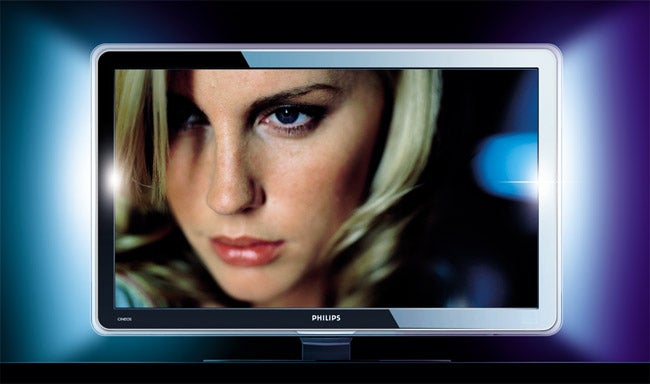
Verdict
Key Specifications
- Review Price: £824.00
Boy, is Philips’ TV range complicated, or what? Before typing a single word of this review, I’ve had to do a good hour of research with various press kits, online materials and a huge instruction manual before I could pinpoint exactly where the 32PFL9603 fits within the Philips hierarchy.
The simple fact is that Philips is rare in the TV world for employing a wide range of different technology generations across its current TV models. To some extent these different generations are signposted by pricing, but that only tells part of the story.
And so questions I’ve had to answer have included what sort of Ambilight system the 32PFL9603 carries; which generation of Philips picture processing the set uses; whether there are any quirks within that processing ‘suite’ (there were!); what native resolution it’s got; and even what type of sound system is onboard.
I tell you all this not simply to make you think that reviewing TVs is a hard life (!), but simply to alert anyone thinking of buying a Philips TV to the fact that you have to be more careful to read the ‘small print’ than you do with any other brand I can currently think of.
Anyway, now that’s all out of the way, let’s get down to business. Starting with the fact that the 32PFL9603 could just be the most attractive 32in TV Philips has ever built, and is at the very least a rival for the classiest moments from design-minded brands such as Loewe and Samsung.
The black panel around the screen gets the ball rolling with its intensely reflective finish and tastefully rounded corners, all offset by an elegant silver trim. But where the set really stands out is with its distinctive translucent ‘cowl’ that curves forward from the TV’s rear to stand proud from the rest of the TV bezel by a centimetre or so.
As well as looking attractive in its own right, this cowl serves two handy practical purposes as well. First, it helps push sound from the TV’s ‘invisible’ speakers down its sides towards your seating position. And second it adds a subtle extra dimension to the set’s Ambilight Spectra 2 system.
Ah yes, Ambilight Spectra 2. Ambilight describes the situation – still unique to Philips, so far as I know – whereby LED lights built into the TV’s sides can emit coloured light in sympathy with the colour content of the image being shown.
The Spectra 2 bit shows that the Ambilight system in the 32PFL9603 is a) a ‘stereo’ incarnation, meaning light spills only from the TV’s left and right sides, not the top edge as well, and b) that the Ambilight processing includes a new ‘timing delay’ element that enables the light reproduction to more effectively present movement, emphasising the sense of brightly coloured objects passing from one side of the screen to the other.
Needless to say, as well as making long-term viewing more relaxing, all this Ambilight Spectra stuff merely enhances the 32PFL9603’s aesthetic glories.
Turning to more prosaic matters, namely the TV’s connections, this TV continues to impress. The provision of four HDMIs is particularly eye-catching – and yes, all of these are v1.3 certified for Deep Colour playback.
Another neat connection touch is a DLNA-certified Ethernet port, so that you can jack the TV into your home network for direct playback of music and picture files. More support comes from a D-Sub port and a USB jack that can handle MP3, .alb slideshows, JPEGs, and MPEG1/2 videos.
So far, so good. And my expectations only grow as the 32PFL9603’s spec sheet serves up a Full HD resolution and a vast claimed contrast ratio of 55,000:1. Obviously a dynamic backlight arrangement has been employed here, which reduces the image’s brightness during dark scenes to improve black levels. But practically all rival LCD TVs use similar backlight technology and few promise contrast ratios even close to 55,000:1. Let’s just hope this figure actually translates onto the screen.
As you’ve probably started to realise by now, the 32PFL9603 sits towards the top of Philips’ current LCD tree. And this high-level position is reinforced by the picture processing system it carries, namely the very latest version of Philips’ Perfect Pixel HD Engine. 
This second generation of the Pixel Perfect Engine builds on the elements aimed at improving motion clarity and sharpness found in the previous version, with new elements aimed at boosting contrast and colours. What’s more, the previous motion clarity and sharpness processors have, here, been fine-tuned to within an inch of their lives.
In fact, Philips now calls the HD Natural Motion element of the Perfect Pixel HD Engine; ‘Perfect Natural Motion’, so pleased is it by the way the new TV – apparently – reproduces motion without either LCD response time blur or the artefacts that generally accompany attempts to reduce motion blur (such as ‘haloing’ around moving objects).
The word ‘perfect’ crops up yet again with the set’s new Perfect Contrast Technology. This reduces light leakage from the LCD backlight during dark scenes while simultaneously increasing the differences between the dark and light parts of the image through digital processing. This system also claims to enhance shadow detail and diminish motion artefacts.
When it comes to colours, the 32PFL9603 utilises a system unsurprisingly called Perfect Colours. This is attributable to an optimised colour input – a ridiculously powerful 17-bit Colour Booster processor which can, it’s claimed, show up to 2,250 trillion colours.
The liberal use of the word Perfect in all these features is, of course, potentially dangerous. For as well as making us wonder what manoeuvring room there is left for future Philips TVs (‘Even More Perfect Contrast Technology’?), it doesn’t half raise expectations about the 32PFL9603’s performance levels.
The sophistication of the Perfect Pixel Engine system also inevitably makes the TV unusually complex to use. Especially as Philips has, sensibly, made most of the Engine’s separate components individually adjustable.
For me, however, the onscreen menu system handles all the multifarious options pretty well. And although I sometimes found it a bit fiddly, I also applaud Philips’ decision to use an iPod-style navigation wheel on the 32PFL9603’s remote control.
Also helpful is Philips’ Active Control system, which does a surprisingly credible job of automatically adjusting multiple facets of the picture for you. Plus there are a series of well-executed themed presets, which include Movie and Game modes. The Game mode is particularly handy, as it slashes back many of the picture processing elements to reduce (though not, it has to be said, completely remove) any processing-induced ‘image lag’ problems that might otherwise ruin your gaming prowess.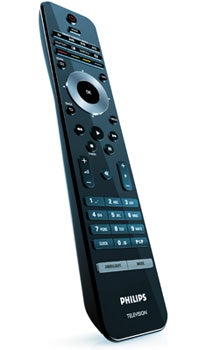
Final features worth a mention are unusually fulsome support of Blu-ray’s 1080p/24 format (thanks to the huge processing power of the Perfect Natural Motion system, which is twice as powerful as last year’s HD Natural Motion); two subwoofers built into the TV’s rear to boost bass response; and finally a new connectivity assistant which helps you – with illustrations – connect all your kit to the TV in the optimal way.
It’s fair to say that the 32PFL9603 talks a very good talk. So it’s just as well it also walks a very good walk.
Particularly striking is the awe-inspiring amount of detail in HD footage. Our trusty ‘Casino Royale’ Blu-ray, for instance, has never looked as detailed and textured as it does on the 32PFL9603. Seriously, even the pixels seem to have pixels! 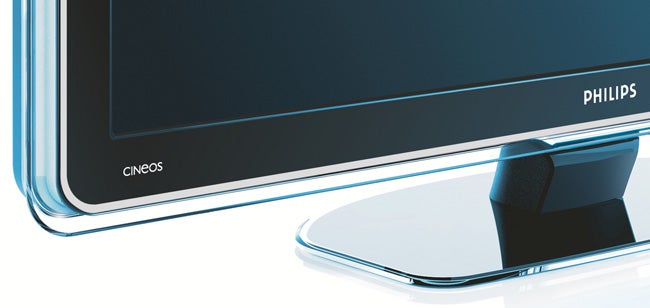
Take, for instance, the shots in the Bahamas as Bond meets with M after finding the murdered girl in her hammock. There are wrinkles in Judi Dench’s face that I swear I’ve never noticed before, and you can make out individual strands of stubble on Bond’s face even during medium distance shots – again something I’ve not noticed before, at least on a screen as small as 32in.
Not surprisingly, all this new-found fine detail delivers every last drop of high definition’s visual impact, and comprehensively lampoons any naysayers who reckon you don’t really need HD on a 32in or smaller TV.
Adding still further to the image’s unique sharpness and detail is its near-total freedom from LCD’s traditional image blur issue. With Perfect Natural Motion engaged, moving objects look just as clear and textured as they do when they’re standing still. Even though the 32PFL9603 does not, unlike the larger sets in the 9603 range, employ 100Hz processing. (If you’re wondering why this is the case, apparently it’s because the 32in screen comes from a different source to the larger ones, and since this 32in screen boasts an innate response time of 2ms, 100Hz processing was deemed unnecessary).
The extra fluidity introduced by the Natural Motion processing means that you don’t even have the customary image judder to add a touch of indistinctness to proceedings. Actually, the extra fluidity is so striking it takes a little getting used to. But tellingly, once I’d experienced it for a couple of days, I found going back to my old juddery set an unwelcome jolt.
The combination of Perfect Natural Motion and the processing’s ability to add resolution to pictures also makes the 32PFL9603 something of a hero when it comes to showing standard definition pictures. They certainly look way sharper than is common on Full HD TVs, as well as suffering less with such noisy scaling nasties as dot crawl, edge glimmer and exaggerated MPEG noise in digital broadcasts. My only complaint with standard def playback might be that skin tones look ever-so-slightly waxy at times. But this really is small beer versus all the things the TV gets right.
The next positive is the 32PFL9603’s outstanding black levels. There’s hardly any of the customary greyness on show, during either predominantly dark shots such as those in Bond’s torture room, or, even more impressively, in dark elements within otherwise bright shots. And so, for instance, Bond’s tailored DJ looks profoundly black as he struts his way around the casino ahead of his poker contests.
I was also hugely impressed by the TV’s colours. The sun-drenched Bahamas sequences look vibrant and dynamic, while the extensive card game sequences, with their low-level lighting, facial close-ups and varied skin tones, all look pitch perfect. What’s more, subtle shifts in colour tone are handled with a finesse and stripe-free accuracy that is a marvel to behold.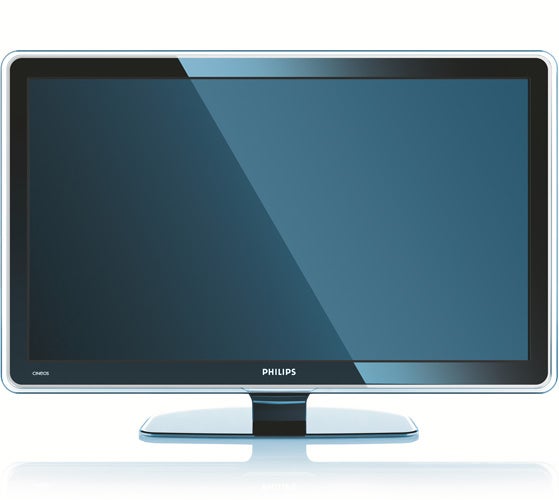
The combination of intense black levels and scintillating fine detail resolution helps pictures look remarkably three-dimensional and cinematic for a 32in screen too, especially as the image’s intense clarity is delivered without exaggerating noise such as dot crawl or grain.
In fact, I’d even say that pictures sometimes take on a level of what I can only call ‘beauty’. Check out, as a perfect example of what I mean, the shots of Mr White as he surveys the view from his fancy villa at the end of ”Casino Royale”. If you’re not left shaking your head in ‘how do they do that’ admiration, you must be dead from the neck up.
Overall, there’s no doubt whatsoever that the improvements ushered in for generation two of Perfect Pixel HD really do make a profound difference to Philips’ picture quality. Particularly pleasing in this regard is one final plus point I haven’t touched on yet: the huge reduction in the amount of processing artefacts on show.
I personally never felt too troubled by the shimmering halos around the edges of moving objects or the occasional ‘flicker’ problems over really fast-moving image components that undoubtedly existed to some degree on last year’s Perfect Pixel TVs. But I’m suddenly made far more aware of them now that they’ve been reduced so emphatically on the 32PFL9603.
That said, they’re not completely gone. During ”Casino Royale’s” most action packed sequences, such as the lorry fight on the airport runway, really fast motion within the frame can still flicker for a split second. Also, every now and then tracking shots, such as the one where Bond walks towards the casino at night, can suffer small patches of the old haloing problem.
However, as with any high-level processing system, the Perfect Pixel HD Engine is all about how much the positive benefits outweigh the negative side effects. And in my opinion the 32PFL9603 positives outweigh its negatives by the proverbial country mile.
Provided, at least, that you set the TV up correctly. For more than with any other TV I’ve ever tested, you really do have to dedicate some quality time to perfecting the 32PFL9603’s images for all your different sources. Leave noise reduction set too high, for instance, and the whole picture processing house of cards can come tumbling down.
As I suggested earlier, the 32PFL9603 has systems that can take some of the settings burden off you. But for my money there’s just no substitute for playing with things manually. I won’t go into every detail of the set up levels I used for my various sources, partly because this would take too long and partly because I want to give you freedom to find settings that best suit your personal tastes.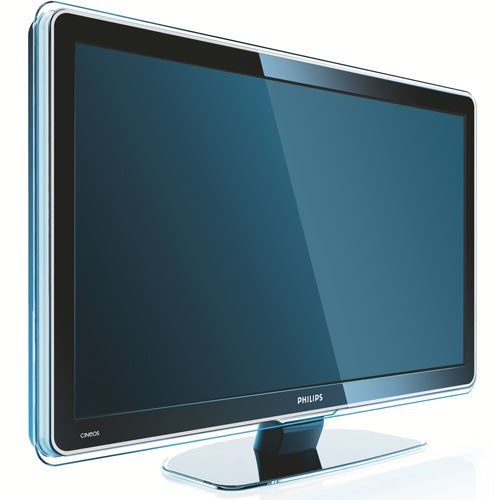
But I would certainly urge you to ensure the following: have absolutely no noise reduction systems running while watching high definition pictures; leave the HD Natural Motion tool set to minimum rather than off or maximum; set the contrast level to no higher than 75 and possibly lower if you can stomach it; leave Advanced Sharpness on; don’t set the Dynamic Contrast higher than medium, and probably stick with minimum; and don’t set the Colour Enhancement feature higher than minimum. Follow this and you should be well on your way to enjoying the best the 32PFL9603 has to offer.
Turning, finally, to the 32PFL9603’s audio, it once again blows the competition out of the water. The amount of volume it can shunt out is remarkable given its relatively diminutive size, especially when you consider that this volume is delivered without causing distortion. It also arrives in the company of a truly expansive dynamic range that picks out peak trebles effortlessly, always leaves vocals sounding clear, and best of all underpins proceedings with levels of bass (thanks to the two subwoofers) that most LCD TVs simply cannot reach.
”’Verdict”’
The 32PFL9603’s extravagant looks are merely the start of a love affair that grows with every hour you spend in this TV’s company. There are elements of its picture performance – its motion resolution and general levels of HD detail – that attain genuine benchmark level, it’s got more features than I’ve ever seen before, and even the sound is awesome. Needless to say, all this has got us positively gagging to see how the set’s bigger brothers will shape up in the coming weeks…
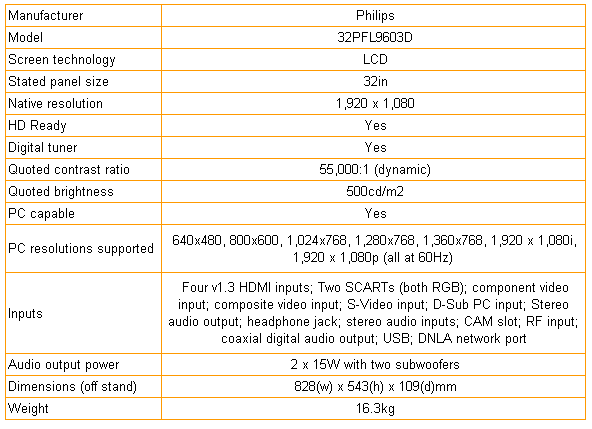
How we test televisions
We test every TV we review thoroughly over an extended period of time. We use industry standard tests to compare features properly. We’ll always tell you what we find. We never, ever, accept money to review a product.
Trusted Score
Score in detail
-
Features 10
-
Value 8
-
Image Quality 9
-
Design 10
-
Sound Quality 9

